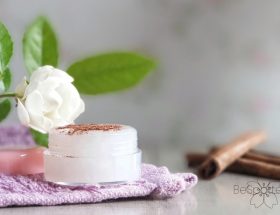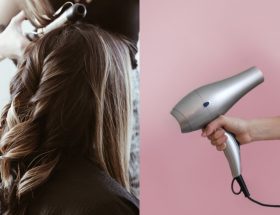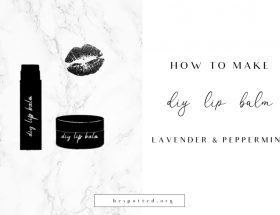This post may contain affiliate links. Any sales made through such links will reward me a small commission – at no extra cost for you!
Hydrating vs moisturizing 101 – everything you need to know to get and maintain healthy, youthful and flawless skin.
It is easy to get lost amongst a vast variety of products on beauty shelves. Many of us still get confused with what face serum is, and what we can use toner for, and under which angle to break our tongues to pronounce that thing on a label, and do we really need all these things.
There are, however, two terms even insiders use often and too freely as synonyms, even though they are not the same thing.
Though both hydrators and moisturizers have a similar role – to maintain the optimal level of water in your skin, there are some crucial differences in the way they work.
What is Hydrating and What is Moisturizing?
Basically, hydrating vs moisturizing comes down to this – hydrators supply your skin with water, moisturizers make sure it stays there.
The skin contains around 64% water and this number decreases as we age. Water is necessary for the normal functioning of skin cells and for the skin to appear young and healthy.
And that is the hydrators’ job – to supply the skin with enough water. Hydrators are mostly humectants which, simply put, attract water molecules from the surrounding air to your skin. That way, they make your skin plump and supple.
The problem with this is that water evaporates from the skin pretty fast. Now, the skin has its own mechanism to deal with that. Normal skin produces enough lipid cells to create a lipid barrier on the surface.
This protective barrier locks in the moisture and prevents its evaporation. But more often than not, and especially with dry skin, skin loses its ability to produce enough oils and the barrier is damaged.
So, moisturizers sort of imitate that lipid barrier and keep the moisture locked in your skin. Their texture is heavier than hydrators’.
Unlike hydrators, they don’t penetrate deep into the skin, nor do they supply the skin with water. Instead, moisturizers stay on the surface of the skin, blocking the water from ‘escaping’, keeping your skin hydrated, soft and smooth.
Your Skin Needs Both Hydration and Moisturizing
There is no point in hydrating your skin if it is going to lose all that water in a blink of an eye. On the other hand, if you cover dehydrated skin with a moisturizer, it is just going to sit there, having nothing to keep in.
However, not every skin type requires equally hydration and moisturizing. For example, dehydrated skin will mostly need hydration, so, if your skin is dehydrated, that’s what you should focus on. This also works for oily skin, which is often very dehydrated.
On the other hand, if you have dry skin, the problem is in damaged and/or insufficient lipid barrier. Try to find a really quality moisturizer, while the hydrating part doesn’t have to cost you that much.
If you have a normal skin type, with the optimal level of water in your skin, your skincare routine should only maintain the existing condition of your skin. You can occasionally hydrate your skin using some light product, just to refresh it.
Also, moisturize your skin, especially in drying conditions, such as air conditioning, cold winter air, central heating or living in an area with low humidity.
Hot showers can also dry out the skin quite a bit. Even though during the shower your skin cells fill with water, hot water strips down the natural oils from your skin.
Plus, the water starts to evaporate the moment you step out of the steamy bathroom. You have only a couple of minutes to apply a moisturizer and lock the moisture in. And if you apply your moisturizer while your skin is still slightly damp, even better.
So… Do You Need To Buy Two Types of Face Creams?
You need day and night face creams, but you don’t need, say, one hydrating and one moisturizing daily cream.
First of all, face creams are not the only products with hydrating properties. Face serums are highly hydrating. Face toners can be hydrating. There are all shapes and forms of face masks that are very hydrating (vs moisturizing face masks that mostly focus on rebuilding your skin’s lipid barrier). Face mists are great hydrators. If you are already using some of these products, then your skin is probably hydrated enough.
Second, many modern face creams have both hydrating and moisturizing properties. On their own, they won’t be enough for most of us, but, in combination with some hydrating product, they actually work very well.
The most important thing is to track your skin, how it reacts to certain things and what it needs more of. That should tell you everything you need to know.
If you’re still unsure, visit a dermatologist for some professional advice.
How to Choose the Best Product for Me?
Well, it really depends on your skin and what it needs most. There is no universal product that will suit everyone. As with most things in life, this often means kissing a lot of frogs.
But, checking out labels could help you to narrow down the list of products and enhance your search for the right one (or in this case the right two).
Best hydrating ingredients include: hyaluronic acid, glycerin, urea, alpha hydroxy acids, sorbitol, as well as seaweed and algae extracts.
The thing to keep in mind, though, is that most of these ingredients hydrate your skin by attracting water molecules from the surrounding air. Which is great if you live in a high-humidity area. In low humidity environment, however, they might start to pull water out of your skin and dehydrate it even more.
As for moisturizers, look for products that contain shea butter, cocoa butter, sweet almond oil, coconut oil, jojoba oil, essential oils, fruit extracts and beeswax.
Can The Hydrating vs Moisturizing Rule Be Applied to DIY Beauty Products?
If you practice a holistic lifestyle or for some other reason would rather give homemade beauty products a try, you can still follow the rules of hydrating vs moisturizing. It shouldn’t be too hard to take the same logic and apply it to natural beauty products.
For instance, you can make a face mask using highly hydrating ingredients, like aloe vera gel, honey, rose water, milk and dairy, cucumber, tomato and most fruits. Or you can apply milk, white or green tea with a cotton ball. There are also great recipes for DIY face mists.
Then, preferably while your face is still damp, apply an organic moisturizer to lock in the moisture. Natural oils and butters are great moisturizers. Or – have you ever considered making your own moisturizers? You can find here a recipe for DIY Whipped Body Butter.











